#Emily Vey Duke
Explore tagged Tumblr posts
Text

Emily Vey Duke & Cooper Battersby, {1998} Rapt and Happy
#film#gif#emily vey duke#cooper battersby#rapt and happy#1998#female filmmakers#short film#flowers#text#people#black and white#colour#male filmmakers#usa#1990s
3 notes
·
View notes
Photo










Artists’ Book Display for the week of January 27th, 2020
Roasting the Boogie by Jo Cook, Self published.
I'd Rather be Polymorphous Perverse by Emily Vey Duke : E.V. Dule 1997
The Future of Scrapetool Issue by Carolyn Leith, 1995.
Daily annoyances by Joann Thornton 1991
The Sea is silent: corrected poems 1969-1989 by stuart Mills : Coracle Press, 1991
#Artists' Book Display#Art Books#Library#Books#Art#Artists' Books#Artist Books#Books and Art#Library Art#Jo Cook#Emily Vey Duke#Carolyn Leith#Joann Thorton#Stuart Mills#Banff#Alberta#Banff Centre#The Banff Centre#Paul d Fleck Library and Archives
2 notes
·
View notes
Video
vimeo
Here is Everything (2013) from Duke and Battersby on Vimeo.
Emily Vey Duke and Cooper Battersby Here is Everything 2013
Here Is Everything presents itself as a message from The Future, as narrated by a cat and a rabbit, spirit guides who explain that they’ve decided to speak to us via a contemporary art video because they understand this to be our highest form of communication. Their cheeky introduction, however, belies the complex set of ideas that fill the remainder of the film. Death, God, and attaining and maintaining a state of Grace are among the thematic strokes winding their way through the piece, rapturously illustrated with animation, still and video imagery.
It is a work that contains specific details about its themes, but sufficiently ambiguous and free of dogma, including religious dogma that, our futuristic visitors explain, is a vestigial leftover from an earlier phase of revolution. And while Death is an ever-present rumination, so are Redemption, Affirmation, and Possibility.
2 notes
·
View notes
Photo
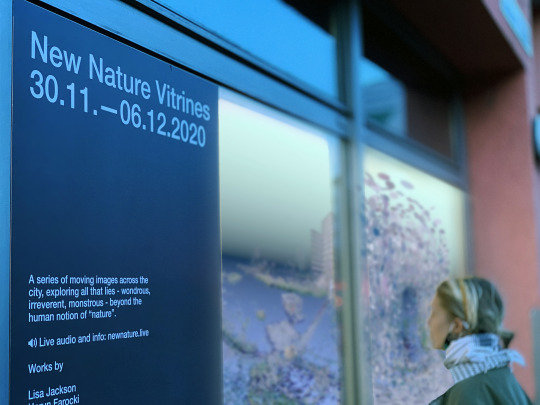
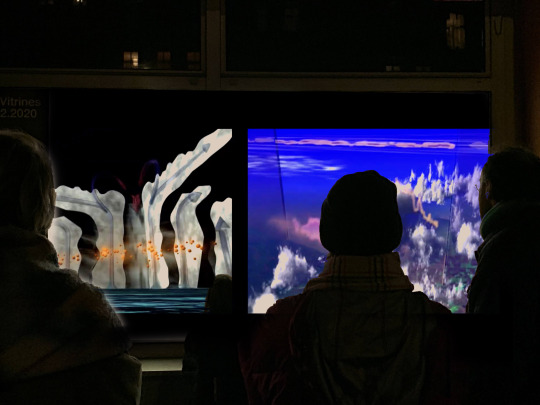
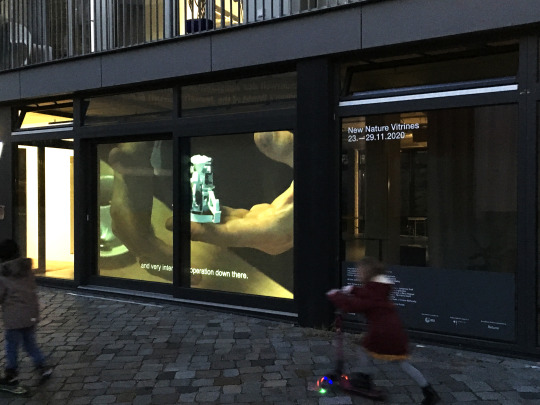
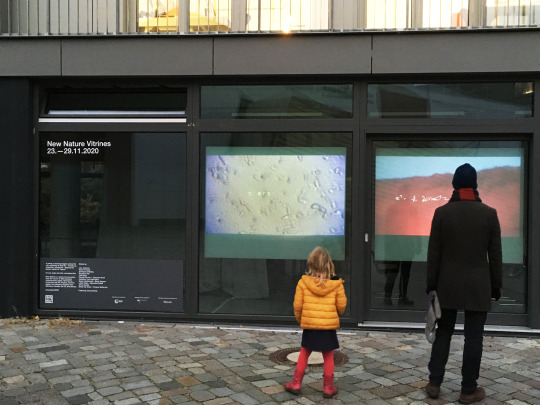
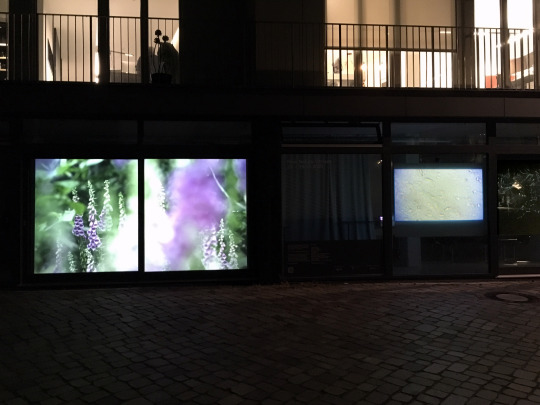

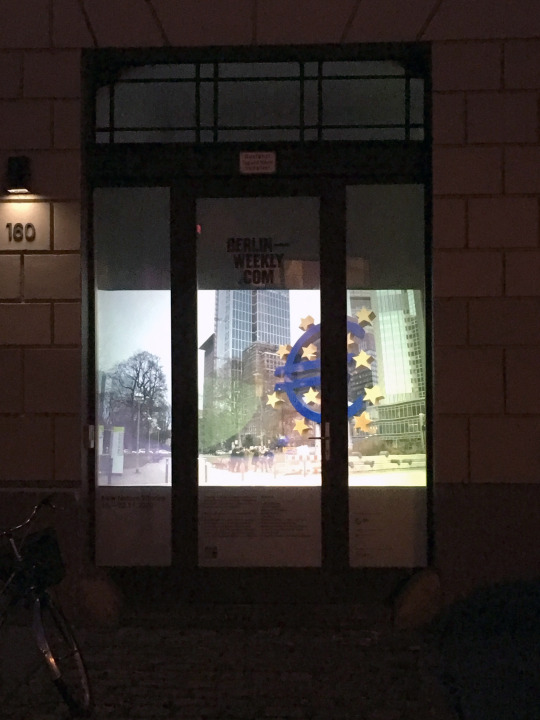
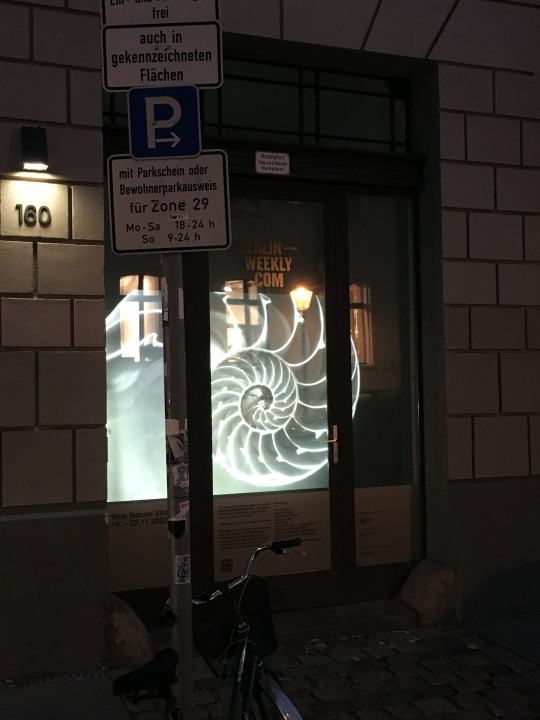
New Nature Vitrines is an exploration of all that lies - unknowably, irreverently, monstrously - beyond the human notion of “nature”. The series assembles audiovisual and sound works by contemporary artists, filmmakers, technologists, and scientists, foregrounding stories and scales that interrogate the inherent anthropocentrism of images, often by riffing on the codes and conventions of nature films, or subverting them altogether. The artists, based in Germany, Canada, Mexico, and the United States, propose intricate soundscapes, airborne and microscopic perspectives, images imprinted by lichen, dirt, fur, and bacteria. Their works excavate complex biological, interspecies, and computational systems, all in a constant state of becoming, flickering with realities beyond our consciousness and invoking idiosyncratic reinventions of our relationship to the natural world. The works are presented in the vitrines of exhibition spaces in three different Berlin neighborhoods – Berlin Weekly (November 16 – 22, 2020), feldfünf (November 23 – 29), and goeben berlin (November 30 – December 6) – as well as at the Goethe-Institut Montreal (November 16 until Dec 6, 2020) and Goethe-Institut New York (December 15, 2020 until January 8, 2021).
Their placement in windows across the city diverts the restrictions of our COVID times to present decentralised and unexpected, emotional and visceral encounters with nature, springing forth from the quotidian facades of our cities. The public is able to watch the moving image works from outside all venues. Stereo sync audio is made accessible through the visitors’ smartphones. Please bring your own headphones!
Participating Artists: Lisa Jackson, Harun Farocki, Doireann O'Malley, Suzanne Kite, Lisa Rave, Florian Fischer + Johannes Krell, Colectivo Los Ingrávidos, Sasha Litvintseva + Beny Wagner, Ladan Siad + Aljumaine Gayle, Jenna Sutela, Emily Vey Duke + Cooper Battersby, and Joan JonasIn Berlin, selected works by Jenna Sutela are featured at feldfünf; Joan Jonas’ “Waltz” is presented separately to the works in the vitrines at goeben berlin.
The exhibitions will be framed by an (online) talk with curator Stefanie Hessler, artist Jenna Sutela, and scientist Markus J. Buehler on Sunday, December 6, 2020, 1pm (ET) and 6pm (Berlin). Together, Sutela, Buhler, and Hessler will discuss their respective work at the intersection of science, art, and technology. They will raise questions of how to sense the natural world and its intimacies with technology at a time when boundaries between the natural and the artificial, the material and the spiritual, are more fluid than ever.
Selected works by Jenna Sutela are featured at feldfünf; Joan Jonas’ “Waltz” is presented separately to the works in the vitrines at goeben berlin. New Nature Vitrines is a programme by the Goethe-Institut Montreal, curated by Samara Chadwick and Sandra Teitge, and produced by Retune.
0 notes
Photo

20.03.2020
Dark Water comes back!
With a night at Matt's Gallery’s new space in Nine Elms, exploring and extending performances and screening around a morphic body, setting a contemporary Gothic through technology & the inner space. An evening of performances and screenings around Sci Fi / technology / the future bodies programmed by Tai Shani & A---Z (Anne Duffau). "At the point of 'Heat Death of the Universe' or maximum Entropy / A realised cyborgian myth / A Subliminal intervention between Here and Nowhere" (Tai Shani, The Vampyre, 2016) Tickets released on Monday 24th of Feb. at 6.30pm
· Performances: Daniel Burley Mary Hurrell Harold Offeh Maxwell Sterling Nils Alix-Tabeling · Films: - Lynda Benglis - Eleanor Antin - Keren Cytter - Liz Magic Laser - Kalup Linzy - Nenghuo & Shi Zeng - Jennet Thomas - Emily Vey Duke and Cooper Battersby - Leo Carax - Julie Béna - Mark Leckey - Bruno Pélassy - Patrick Staff
- Su Hui-Yu With a special print by - Linder Sterling www.mattsgallery.org www.taishani.com www.abc-z.org
0 notes
Video
vimeo
Vol. 1 January 2018 The Documentary Camera What is a documentary camera? What do cameras do? How do we know? The increasing number of cameras, the number of individuals and spaces exposed to their effects, and the massive volume of photographs and video generated by those cameras and then shared, posted, streamed, installed, and screened across the globe suggests that it might be time to re-evaluate these questions and return to a set of first principles. Within the field of documentary, the camera is often thought of as a key tool of transparency in a democratic politics of publicity, one where the camera aids in making publics by making public that which remains hidden. But a contemporary surplus of recording devices produces as many dilemmas as it may resolve: it might be said to produce not more democracy but more suspicion, and their ubiquity comes at a time when many are experiencing more precarity than stability. Table of Contents Jason Fox, Introduction: What do Cameras Do? Ariella Azoulay and Aïm Deüelle Lüski, Not at the Click of a Button Sherry Millner and Ernest Larsen, Beyond the Expedient: An Interview with Isaac Julien Jeffrey Skoller, iDocument Police: Contingency, Resistance, and the Precarious Present Benj Gerdes, Everything Can Be Optimized: Review, Comment, and Message board as Proto Camera Pamela Cohn, The Present Moment: A Conversation with Kirsten Johnson Cecilia Aldarondo and Thomas Allen Harris, Archival Interventions: Cecilia Aldarondo and Thomas Allen Harris in Conversation Scott MacDonald, The Sublimity of Document: Carl Akeley, The Habitat Diorama, and Dioramic Cinema Eli Horwatt, All of our grievances are connected: An Interview with The Illuminator Collective Jason Fox, Representational Regimes: A Conversation with the Abounaddara Film Collective Lonnie van Brummelen and Siebren de Haan, Something is there: Filmmaking in Multiple Realities Cooper Battersby, Emily Vey Duke, and Vashon Watson, Camera Ministry: A Conversation with Khalik Allah Mandy Rose, Technologies of Seeing and Technologies of Corporeality: Currents in Virtual Reality Nonfiction Jean-Marie Teno, Africa Shoots Back Ariella Azoulay and Miki Kratsman, Targeted Killing Huffa Frobes-Cross, Action, Documentation, Documentary: The Early Photography of Allan Sekula, Martha Rosler, Fred Lonidier and Phil Steinmetz
0 notes
Text
Exhibition: superyoung

I will be showing two drawings and a wallpaper installation in a group exhibition in superyoung at Kamloops Art Gallery in Kamloops, BC.
Cooper Battersby & Emily Vey Duke • Mark Clintberg • Sarah Gotowka • Emily Gove • Terrance Houle • Roselina Hung • Sarah Anne Johnson • Jenny Lin • Hazel Meyer • Marc-Antoine K. Phaneuf • Walter Scott
“The category of youth is not a straightforward one. Beyond its designation of the stage of life between childhood and adulthood, it encompasses a complex multifaceted “imaginary”—one that is rich in analogous associations and imagery. In its most negative light, youth is denigrated as the incarnation of debauchery and excess, but in its most positive light, youth is idealized as the embodiment of pre-socialized authenticity, unbridled potential, creativity and freedom. The celebratory virtues typically associated with youth strikingly correspond with those sought after by many artists within their own art practices.
A fascination with youth’s attributed imaginary is vividly articulated throughout the artworks in superyoung, a companion exhibition to Kids these days. Displaying an aesthetics of youth, the featured artworks capture and embody an overarching youth-inspired perspective, mindset or way of communicating. Unlike many of the artists in Kids these days who predominantly assume the role of observer, the artists in superyoung unreservedly adopt and appropriate attitudes, styles, vernaculars and modes of expression commonly ascribed to youth and youth culture. This youth-inspired performativity also manifests itself less explicitly through the creation of artworks made within a coded sensibility of youth—as if made by youth themselves.
Comprised of drawings, collages, textiles, sculptures and videos, superyoung presents a wide range of work marked by aesthetics, styles and strategies that broadly evoke youth and youth culture. These works often display an unpolished, unschooled aesthetic or conversely, a naïve, romantic expressivity. Some recurring tropes are heightened emotionality, nostalgia, humour, playfulness, irony, cynicism and an appreciation of D.I.Y and pop culture.”
The curatorial research for this exhibition was supported by the Canada Council for the Arts.
Curated by Zoë Chan
Kamloops Art Gallery 465 Victoria Street Kamloops, British Columbia
April 8 – July 1, 2017 Curator’s Tour: Saturday, April 8, 5:30 pm
Gallery hours: Monday to Saturday, 10 am – 5 pm Thursday: 10 am – 9 pm Free admission every Thursday sponsored by BCLC
0 notes
Photo










Artists’ Book Display for the week of September 16th, 2019
Group Action by Emily Vey Duke- London, ON: E Vey Duke, 1997
Image Bank postcard show 1971 by Image Bank( Firm) Vancouver, 1971 ( Toronto Couch House Press)
Oeuvres Freudiennes by Rodney Graham- Rouchechouart, France : Musee departmental de rochechoart, 1996
Bucher : Lawrence Weiner by Lawrence Weiner- Frankfurt am Main: Portikus, 1989
Blue book 8 by Greg Curnoe- Toronto, ON : Art Metropole, 1989
#Artists' Book Display#Artists' Books#Books and Art#Artists' Book#Library Books#Library display#Book Display#Art Display#Emily Vey Duke#Image Bank#Vancouver#Rodney Graham#Lawrence Weiner#Greg Curnoe#Banff#Alberta#Banff Centre#The Banff Centre#Banff Centre Library#Paul D Fleck Library and Archives
2 notes
·
View notes
Video
vimeo
This first Duke/Battersby video is still one of my favourites.
2 notes
·
View notes
Text
I don't know I don't know
Everything arches and everything tumbles and everything is flawless, but I am so flawed.
I don't know I don't know I don't know I don't know
I don't know how to be a worthy citizen, a worthy companion in this perfect nature world.
I don't know I don't know I don't know I don't know
Everything blooms and everything flutters down, and everything is awesome but I am so odd.
I don't know I don't know I don't know I don't know
Branches bend down to kiss the butter coloured buttercups, but I have never been one of those butter coloured girls. And the cherry petals float and drift and back against the curb and the streets are paved with blossoms in this perfect nature world.
I don't know I don't know I don't know I don't know
Know how to be a worthy citizen, a worthy companion in this perfect nature world.
Know how to be a worthy citizen, a worthy companion in this perfect nature world.
I don't know I don't know I don't know I don't know
- Being Fucked Up (2001)
0 notes
Quote
Authority a mode to be practiced widely, a mantle to be shrugged on casually, like a shawl beside the bed.
Emily Vey Duke. From "Notes on Wikipedia as a Rhetorical Mode"
0 notes
Photo

Review / Interview with Emily Vey Dyke & Cooper Battersby
[Via Zouch]
0 notes
Text
WONDER
I spend a lot of time thinking about innocence and the corruption of innocence, fantasizing about a return to innocence, etcetera. This is a logical fallacy. "Innocence" as a concept is inherently nostalgic. We can only harken back. It only exists once it is lost and we can look back on it with longing.
For me, the loss of innocence had nothing to do with having sex or being seen as sexy. It certainly didn't have to do with feeling sexual desire, which was always unequivocal and pragmatic for me. In fact, I think I lost my capacity for sexual desire at the same moment that I lost my innocence.
It was the moment at which I realized, as a child, that I could kindle in another person a sensation of wonder. When I was 3? 8? I think between those years. I know that it supplanted my sexual desire completely. I fear desire has been torn out roots and all, that there's nothing left to coax back to the surface. It might as well have been my entire genital gear that was torn out, and some other sapling planted there.
It happened with a male neighbor. I recall watching his face transform: his eyes going soft and dopey, his mouth hanging open like a big, wet barn door. It felt great. I knew that, perversely, this had to do with him seeing me as innocent, as incapable of artifice--that I was twisting and beaming and crossing my eyes to make it appear that I was incapable of artifice. And the fact that I could dupe him into seeing me that way made it impossible for me to see him with anything other than contempt.
From that moment on, my every phrase and gesture was inflected with the knowledge that if I did it right, if I enacted innocence and sincerity well enough, I could induce the look of wonder again. Even when I was alone it fucked me over. I was always rehearsing, imagining what it would be like if there were someone there to see me, dancing like a princess all by myself. Instead of living my life as the character who experienced wonder, I was living it to be the character who inspired it, the girl in the slow-motion close-up.
Really it's so horrible that I almost wish wonder didn't exist. If there was no wonder I wouldn't feel like a failure for failing to elicit it. I know ultimately the project is the reconfiguration of my self-concept so that I am the one who feels wonder rather than the one who must provoke it in others. I know what the real question is: how do I set off this psychological shift?
-Emily Vey Duke
0 notes
Video
youtube
"Lesser Apes" by Duke & Battersby. Cooper Battersby b.Penticton, BC (1971) Emily Vey Duke b.Halifax, NS (1972)
12 notes
·
View notes
Text
CAN I WRITE ABOUT AGING NOW?
Can I write about aging now? I'm thirty
(well, okay, I'm twenty-nine, but
really, it's only months
till thirty hits, and I'd rather
have relinquished twenty-nine gamely,
early. So)
I'm thirty.
Can I write now about
how normal everything has gotten?
The way I've taken hobbies up?
My sad, entropic body?
The way my sense of
"Self" has been replaced with a sense
that I'm a mammal running through developmental stages, like:
Romantic Love (ten to twenty-two)
Addiction (twenty-five to twenty-eight)
Preoccupation with Career (that's now)
And I know what's waiting, too:
Death of Parents (around fifty)
First Disease (I will not speculate)
When I Grow Obsessed with What I have Not Done (I'd say at fifty, coinciding
with my parent's death)
I can't write anymore about youth; I think I'll start
on aging now.
Artists of the day: Emily Vey Duke & Cooper Battersby
3 notes
·
View notes
